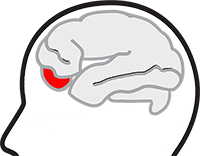Pain Assessment
The IASP (International Association for the Study of Pain) describes pain as:
« An unpleasant sensory and emotional experience associated with actual or potential tissue damage, or described in terms of such damage ».
Scales for pain assessment
Pain is by definition subjective, it is difficult to report it exactly.
Its expression depends on the age, experiences and personality of the patient.
However, we must equip ourselves with tools in order to take this suffering into account and implement the appropriate actions.
Three self-evaluating pain scales are currently available to healthcare teams:
- The verbal descriptor scale or VDS makes it possible to assess the pain felt by the patient in stages. Each stage corresponds to a description that the caregiver gives the patient:

- In the numerical rating scale or NRS, the patient is asked to give a score ranging from 0 to 10 to describe the pain felt. The number 0 signifies “no pain” while 10 signifies “unbearable pain”.
- The visual analog scale or VAS. Descriptive for the patient, numeric for the caregiver.

Scales adapted for cluster headaches
The KIP scale
One patient, named Bob Kipple, designed a scale of 1 to 10 to describe the pain of a cluster headache attack.
This scale is widely used in the English-speaking world.
0: No pain, life is beautiful.
1: Very minor, shadows come and go. Life is still beautiful.
2: More persistent shadows.
3: Shadows are getting constant but can deal with it.
4: Starting to get bad, want to be left alone.
5: Still not a “pacer” but need space.
6: Wake up grumbling, curse a bit, but can get back to sleep without “dancing”.
7: Wake up, sleep not an option, take the beast for a walk and finally fall into bed exhausted.
8: Time to scream, yell, curse, head bang, rock, whatever works.
9: The “Why me?” syndrome starts to set in.
10: Major pain, screaming, head banging, ER Trip. Depressed. Suicidal …
The OUCH Belgium scale
This is based on a scale from a French organisation which has now dissolved.
It combines relationships, comparisons and a scale from 0 to 10.


